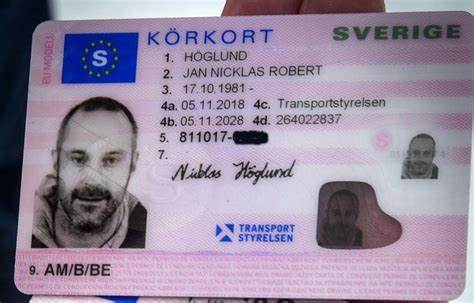You're About To Expand Your Buy Driving License Options
페이지 정보

본문
The Comprehensive Guide to Legally Obtaining a Driving License
Driving is a basic skill for lots of, using the liberty to travel where and when you want, often making life easier and satisfying. However, getting a driving license is a procedure that needs understanding, persistence, and adherence to legal treatments. This guide intends to provide an in-depth summary of the actions one need to follow to legally acquire a driving license, highlighting essential considerations and regularly asked concerns to make sure a smooth and hassle-free experience.
Understanding the Basics
Before diving into the application process, it's important to comprehend the fundamental requirements and kinds of driving licenses offered. Driving laws differ substantially from nation to nation, and even within different states or provinces within the very same nation. Typically, there are several kinds of driving licenses, consisting of:
- Learner's Permit: This is often the initial step at the same time, permitting new chauffeurs to get experience under supervision.
- Provisionary License: Issued after passing a standard driving test, this license generally comes with constraints and is a stepping stone to a full license.
- Complete Driver's License: Once all the required requirements are satisfied, drivers can obtain a full license, which uses complete driving advantages.
- Industrial Driver's License (CDL): Required for those who want to operate industrial vehicles, KöPa Taxilicens KöRkort such as trucks or buses.
Actions to Obtain a Driving License
1. Research Local Driving Laws
The very first action in obtaining a driving license is to research the specific requirements in your area. Go to the official website of your regional Department of Motor Vehicles (DMV) or comparable company to discover in-depth details about the licensing process, consisting of age limitations, needed documents, and fees.
2. Prepare Required Documentation
Each jurisdiction has its own set of files that should be sent to look for a driving license. Commonly needed files consist of:
- Proof of Identity: A passport, birth certificate, or state-issued ID.
- Evidence of Residency: Utility expenses, lease arrangements, or other official files that verify your address.
- Social Security Number (if appropriate): In some nations, a social security number or equivalent is required for identification.
- Vision Test Results: Some places require a vision test before issuing a learner's permit or license.
3. Take a Driver's Education Course
Lots of states and nations require new motorists to complete a driver's education course. These courses are designed to teach the rules of the roadway, traffic laws, and safe driving practices. They can be finished online or in a classroom setting and often consist of both theoretical and practical components.

4. Get a Learner's Permit
When the required paperwork is ready and the driver's education course is finished, the next step is to look for a student's license. This generally includes checking out the DMV or sending an application online. You will likewise require to pass a written test that covers traffic laws and driving knowledge.
5. Practice Driving
With a student's license, you can begin practicing driving under the guidance of a licensed grownup. This is a crucial step in constructing your self-confidence and skills behind the wheel. It's likewise crucial to acquire experience in different driving conditions, such as night driving, highway driving, and driving in harsh weather.
6. Arrange and Pass the Driving Test
After acquiring enough driving experience, you can schedule a driving test with the DMV. The test will examine your ability to safely operate a lorry and follow traffic laws. You will require to bring a properly signed up and guaranteed automobile to the test, and the examiner will evaluate your driving skills on a fixed route.
7. Look for a Provisional License
If you pass the driving test, you will generally get a provisional license. This license might include restrictions, such as a curfew or a limitation on the variety of passengers you can have in the vehicle. These restrictions are created to minimize the threat of mishaps and assist new chauffeurs adjust to the road.
8. Upgrade to a Full License
When you have held a provisional license for the required duration and fulfilled any extra requirements, you can upgrade to a complete driver's license. This procedure usually includes an easy application and may require a retest or additional documentation.
Tips for a Successful Application
- Start Early: Begin the process as quickly as you fulfill the age requirement to provide yourself sufficient time to prepare.
- Stay Informed: Keep updated with any changes in driving laws or DMV treatments.
- Practice Regularly: Consistent practice is crucial to constructing confidence and improving your driving abilities.
- Stay Calm During the Test: Anxiety can affect your efficiency, so take deep breaths and remain focused.
- Follow DMV Instructions: Pay attention to the instructions offered by the DMV and the examiner during your test.
Frequently Asked Questions (FAQs)
Q: What is the minimum age to look for a learner's license?
A: The minimum age differs by jurisdiction. In the United States, it generally varies from 15 to 16 years old. In the UK, the minimum age is 17. Check your regional DMV site for specific details.
Q: Can I make an application for a driver's license online?
A: Some jurisdictions permit you to complete parts of the application process online, such as completing kinds and scheduling tests. Nevertheless, you will normally require to visit a DMV office face to face to submit needed documents and take the driving test.
Q: What occurs if I fail the driving test?
A: If you stop working the driving test, you can typically retake it after a specific period. This period differs by place, but it is frequently a few weeks. It's an excellent idea to practice more before retaking the test to enhance your chances of success.
Q: Can I drive alone with a learner's permit?
A: No, a student's permit normally requires you to be accompanied by a certified grownup, usually over 21 years old, who is seated in the front passenger seat.
Q: Is a vision test required to get a driving license?
A: Yes, a lot of jurisdictions require a vision test to ensure that you can safely run an automobile. You can typically take this test at the DMV or with an approved optometrist.
Q: How long does it require to get a full driver's license?
A: The time required to acquire a full driver's license differs depending on your jurisdiction and the specific actions involved. Generally, it can take a number of months, consisting of the time needed to finish a driver's education course, hold a student's permit, and pass the driving test.

Q: Can I utilize a provisionary license to drive for work?
A: It depends upon the constraints put on your provisionary license. Some provisional licenses enable you to drive for work, while others may have particular restrictions. Inspect your license for information or call the DMV for information.
Q: What is the distinction between a learner's authorization and a provisional license?
A: A learner's license is the very first phase of the licensing procedure and permits you to drive only under supervision. A provisionary license, on the other hand, grants you more driving benefits but might still have some restrictions, such as a curfew or traveler limits.
Q: Can I obtain an industrial driver's license (CDL) without a full driver's license?
A: No, you generally require a full driver's license before requesting a CDL. A CDL is a specific license that needs additional training and testing, and it is just provided to those who have shown the capability to safely run a standard automobile.
Q: What should I do if I lose my driving license?
A: If you lose your driving license, you need to report it to the DMV and make an application for a replacement. You might require to offer evidence of identity and pay a charge. It's also a good idea to notify your insurer and any other pertinent parties.
Acquiring a driving license is a considerable milestone that opens new opportunities and increases self-reliance. By following the actions detailed in this guide and remaining notified about local laws and requirements, you can make sure a smoother and more successful licensing process. Remember that driving is a serious responsibility, and taking the time to learn and practice is important for your safety and the security of others on the roadway.
- 이전글20 Things You Should Be Educated About Buying Driving License 25.07.14
- 다음글7 Things About Treadmills Sale You'll Kick Yourself For Not Knowing 25.07.14
댓글목록
등록된 댓글이 없습니다.
